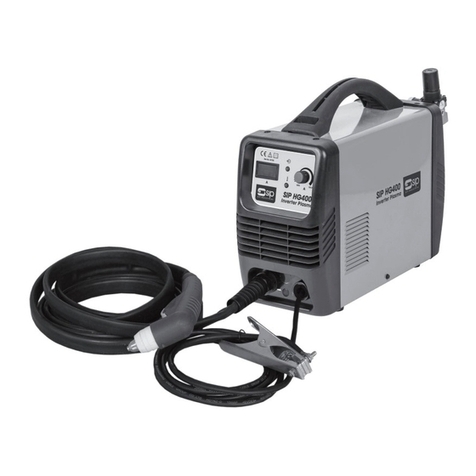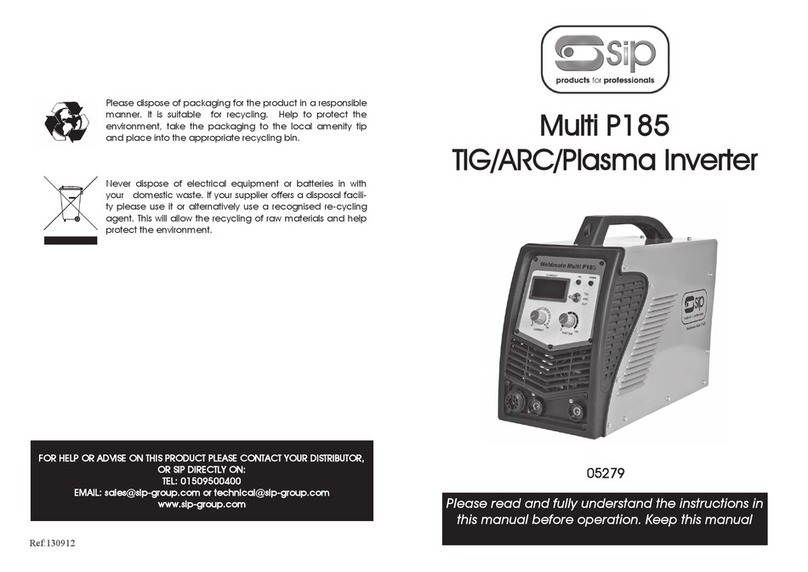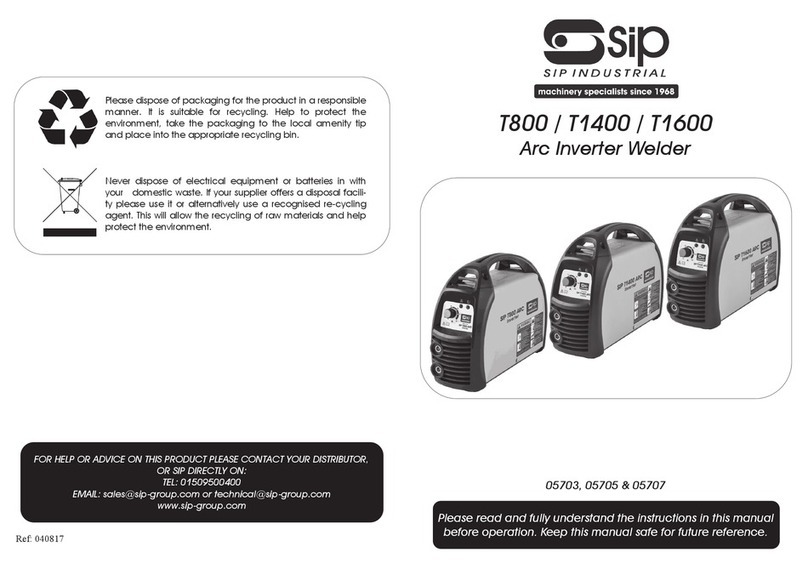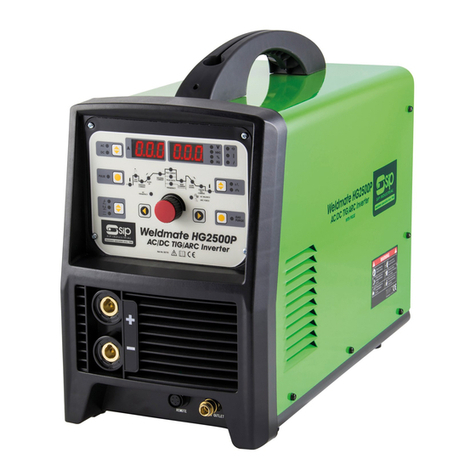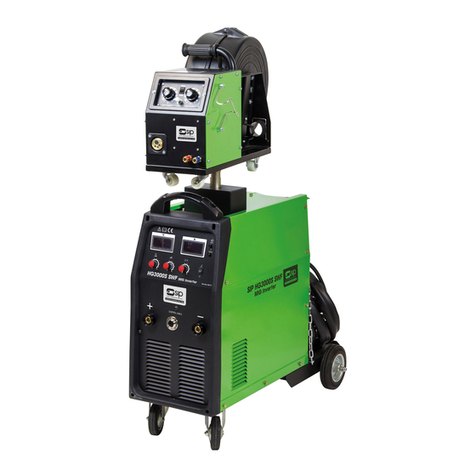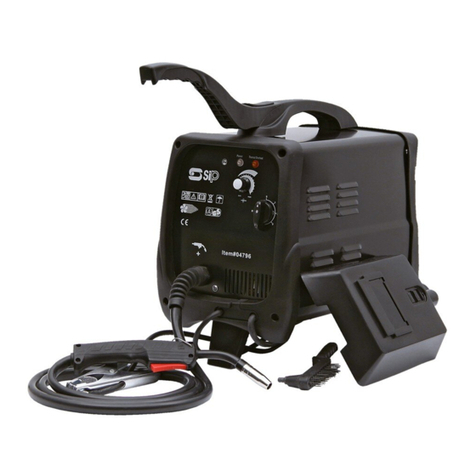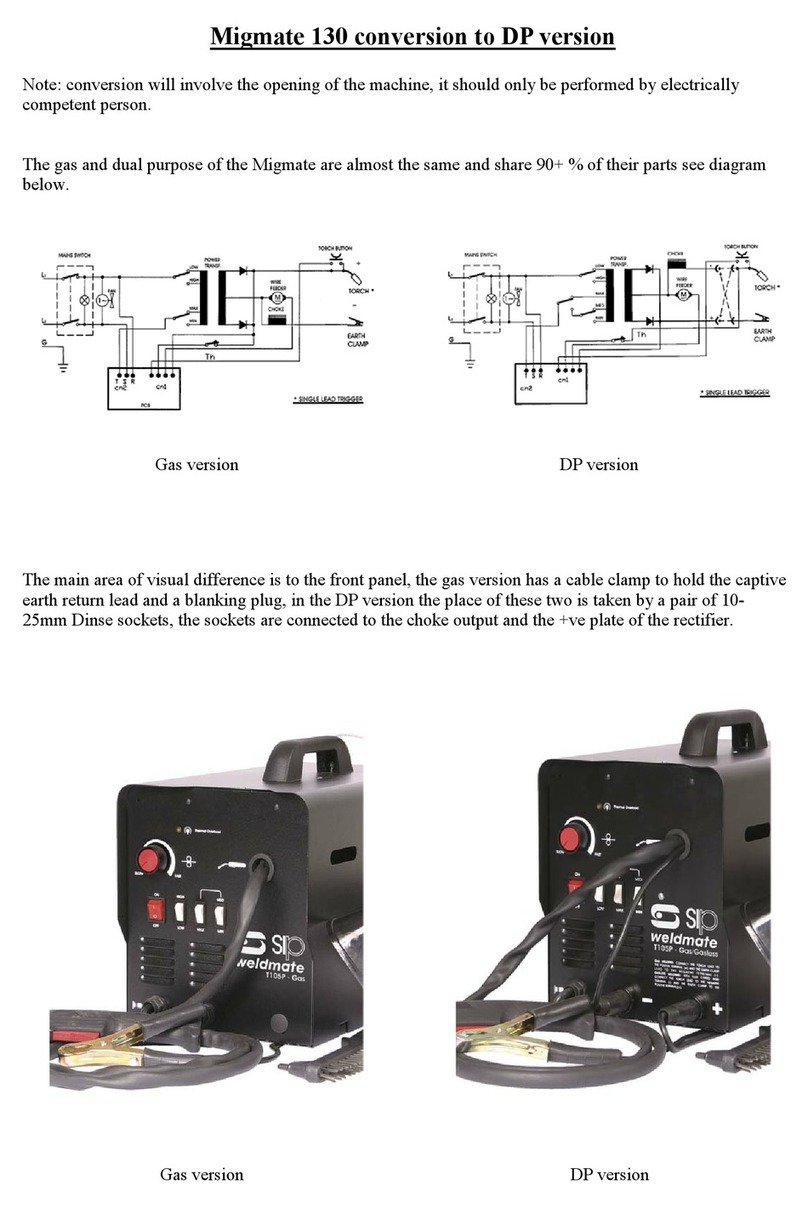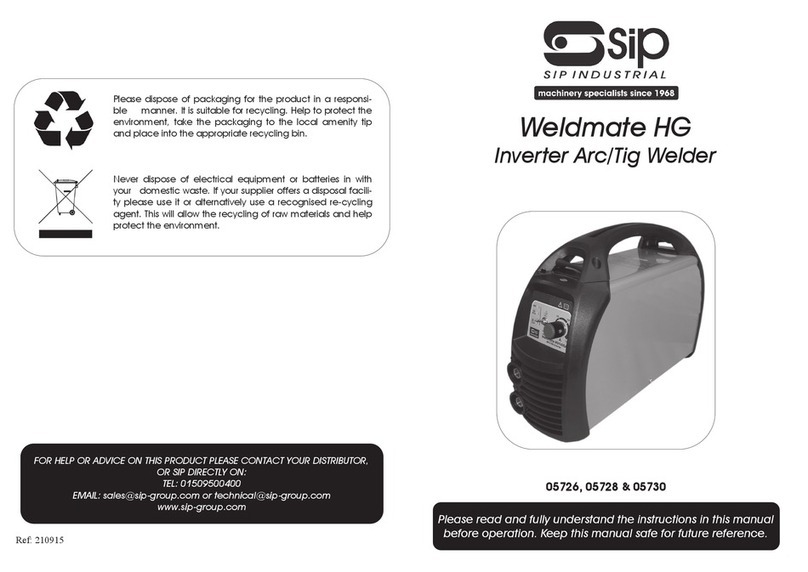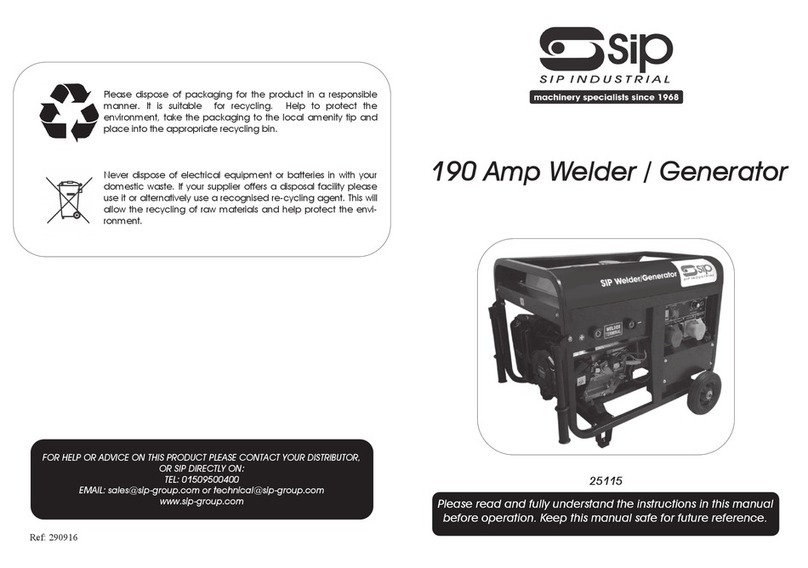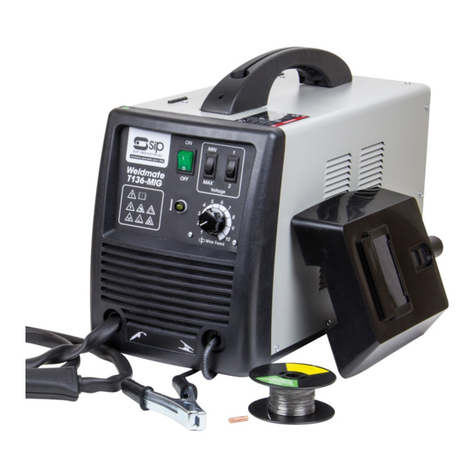28
PARTS LIST WELDMATE T211P (05721)
Ref. No. Description Sip Part No.
1. Handle WE01-00057
2. Cover WE01-00058
3. Mains lead WE01-00059
4. Cable clamp WE01-00033
5. Rear panel WE01-00034
6. Fan motor WE01-00035
7. Axle WE01-00060
8. Wheel c/w cap WE01-00061
9. Insulation strip WE01-00036
10. Thermostat (transformer) WE01-00037
11. Shunt spindle fork WE01-00038
12. Clip WE01-00039
13. Transformer WE01-00062
14. Shunt WE01-00081
15. Indicator WE01-00042
16. Shunt bracket WE01-00043
17. Hand wheel c/w shaft WE01-00044
18. Chassis WE01-00063
19. Front foot WE01-00064
20. Earth return lead c/w earth clamp WE01-00065
21. Electrode holder lead c/w electrode holder WE01-00066
22. Rotary switch WE01-00067
23. Power indicator WE01-00075
24. Thermal overload indicator WE01-00077
25. Fault indicator WE01-00078
26. Plastic frame WE01-00051
27. Clear window WE01-00052
28. Handle cap WE01-00068
29. Thermostat (fault indicator) WE01-00076
30. Axle clip WE01-00074
N/A. Electrode 02715
N/A. Earth clamp 02735
5
SAFETY INSTRUCTIONS….cont
should be kept at a safe distance from the work area.
STORE THE ARC WELDER SAFELY WHEN NOT IN USE: The arc welder should be stored in a
dry location and disconnected from the mains supply, and out of the reach of chil-
dren.
USE SAFETY CLOTHING / EQUIPMENT: Use a CE approved welding mask at all times with
the correct shade of filter lens. A fume extractor should be used particularly where
there is little or no ventilation.
PROTECT YOURSELF FROM ELECTRIC SHOCK: When working with the arc welder, avoid
contact with any earthed items (e.g. pipes, radiators, hobs and refrigerators, etc.). It is
advisable wherever possible to use an RCD (residual current device) at the mains
socket.
STAY ALERT: Always watch what you are doing and use common sense. Do not oper-
ate the arc welder when you are tired or under the influence of alcohol or drugs.
DISCONNECT THE ARC WELDER FROM THE MAINS SUPPLY: When not in use and before
servicing.
AVOID UNINTENTIONAL STRIKING: Make sure the switch is in the OFF position before
connecting the arc welder to the mains supply.
NEVER LEAVE THE ARC WELDER CONNECTED WHILST UNATTENDED: Turn the arc welder
off and disconnect it from the mains supply between jobs. Do not leave the arc weld-
er connected to the mains supply if no more welding is to be done.
DO NOT ABUSE THE MAINS LEAD: Never attempt to move the arc welder by the mains
lead or pull it to remove the plug from the mains socket. Keep the mains lead away
from heat, oil and sharp edges. If the mains lead is damaged, it must be replaced by
the manufacturer or its service agent or a similarly qualified person in order to avoid
unwanted hazards. All extension cables must be checked at regular intervals and re-
placed if damaged.
CHECK FOR DAMAGED PARTS: Before every use of the arc welder, any damage found
should be carefully checked to determine that it will operate correctly, safely and per-
form its intended function. Any damaged, split or missing parts that may affect its op-
eration should be correctly repaired or replaced by an authorised service centre un-
less otherwise indicated in this instruction manual.
KEEP ALL PANELS IN PLACE: Never operate the arc welder with any panels removed,
this is extremely dangerous.
MAINTAIN THE ARC WELDER WITH CARE: Keep the earth clamp and electrode holder
clean for the best and safest performance.
USE ONLY RECOMMENDED ACCESSORIES: Consult this user manual, your distributor or
SIP directly for recommended accessories. Follow the instructions that accompany the
accessories. The use of improper accessories may cause hazards and will invalidate
any warranty you may have.
SECURE THE WORK-PIECE: Always use welding clamps to secure the work piece. This
frees up both hands to operate the arc welder correctly.
DO NOT OVERREACH: Keep proper footing and balance at all times.
USE THE RIGHT TOOL: Do not use the arc welder to do a job for which it was not de-






